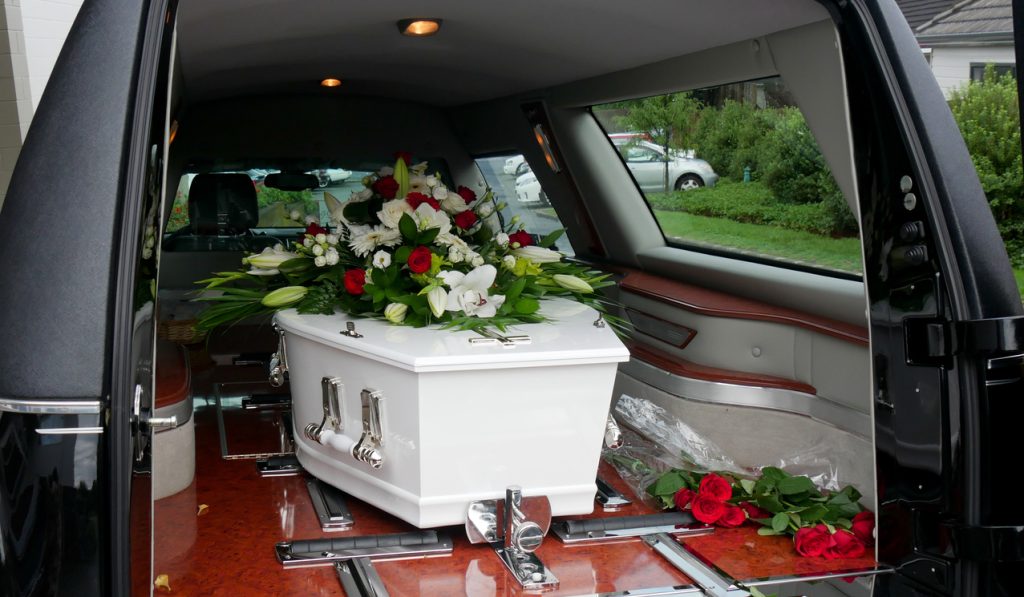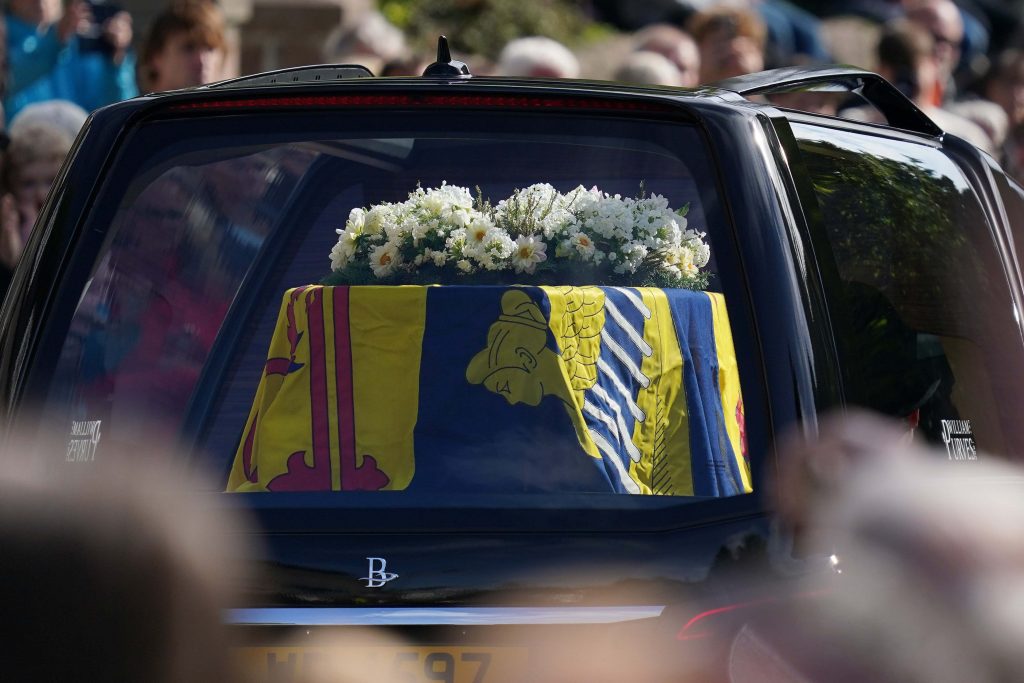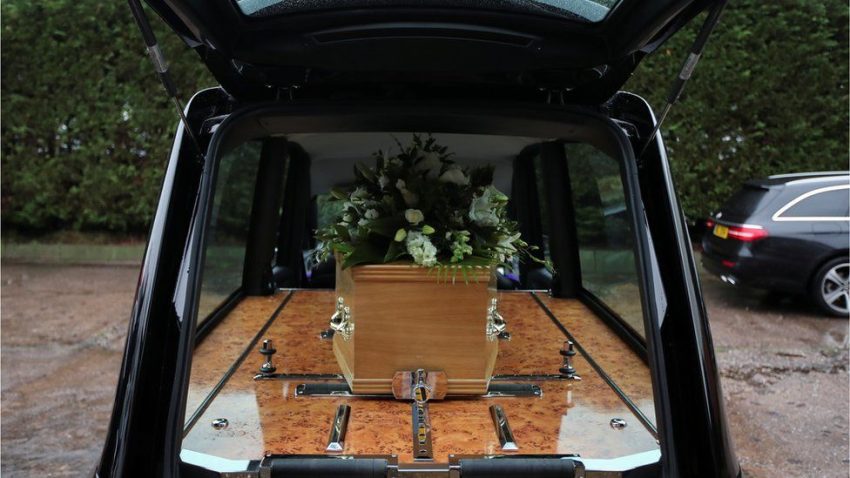The way a coffin goes in a hearse can vary based on cultural, religious, and regional traditions. In many Western cultures, the head of the deceased is placed towards the front of the hearse, allowing the family to walk behind and follow the journey. This tradition represents the deceased “leading” the way to their final resting place. However, some cultures and religions may place the deceased’s feet towards the front to signify a different spiritual belief.
Overall, there is no universally mandated way a coffin should be positioned in a hearse. The orientation depends on the specific traditions and customs followed by the deceased’s family, religious beliefs, or regional practices. Funeral directors and professionals are well-versed in these customs and work closely with families to ensure that the coffin is placed in the hearse in a manner that respects the wishes of the deceased and their loved ones.
What Is a Hearse?

A hearse is a specialized vehicle designed for the dignified transportation of deceased individuals during funeral processions. These vehicles are typically elongated and equipped with specific features to accommodate a casket, providing a respectful and secure means of conveying the deceased to their final resting place.
Hearses often have a distinctive and solemn appearance, and they are an essential component of funeral services. While there can be variations in hearse designs, they all share the common purpose of facilitating the transportation of the deceased and their casket with the utmost care and reverence.
Funeral directors and professionals oversee the use of hearses and ensure that the process is conducted in a manner that honors the wishes and beliefs of the deceased and their family.
The History of Hearse and Coffin Placement
Ancient Traditions
In ancient times, different civilizations had distinct practices for coffin placement. In some cultures, the head of the deceased faced east, while others positioned it towards the west, often based on their religious beliefs.
Western Traditions
In Western cultures, the common practice of placing the head of the deceased towards the front of the hearse became prevalent. This symbolized the deceased leading the way to the afterlife, with mourners following behind.
Religious Influence
Religious beliefs played a significant role in determining coffin placement. In Christian funerals, the head typically faced forward to symbolize the deceased’s journey towards salvation. Meanwhile, in certain Jewish traditions, the feet were placed towards the front as a symbol of humility.
Regional Variations
Even within Western societies, there were regional variations. For example, in some parts of Europe, the feet-first arrangement was common. These variations were often influenced by local customs and norms.
Personal Preferences
In modern times, the way a coffin is placed in a hearse largely depends on the preferences and customs of the deceased’s family. Funeral directors and professionals work closely with families to ensure that the chosen arrangement respects their loved one’s beliefs and wishes.
Throughout history, the placement of coffins in hearses has been a reflection of the values, beliefs, and customs of the time. Today, it continues to be a personalized choice that honors the memory of the deceased in a way that is meaningful to their family and community.
What Cultural and Religious Significance Determines Coffin Placement in a Hearse?
Coffin’s placement in a hearse carries profound traditions and significance rooted in cultural, religious, and historical contexts. The way a coffin is positioned reflects not only the customs of a particular society but also the spiritual beliefs and values associated with the journey to the afterlife.
Respecting the Deceased
The placement of the coffin is a sign of respect for the departed soul. In many cultures, the arrangement mirrors the deceased’s final journey, either symbolically leading them to the afterlife or reflecting humility and equality in death. This gesture of respect pays homage to the life lived and the profound transition to the next realm.
Spiritual Beliefs
The orientation of the deceased in the hearse often aligns with the religious beliefs of the family and the deceased. For Christians, the head-forward tradition signifies the deceased leading the way to salvation, mirroring the belief in Christ as the “way, the truth, and the life.” Conversely, in some Jewish traditions, placing the feet forward is an expression of humility before a higher power.
Cultural Practices
The customs surrounding coffin placement can vary widely from one culture to another. In some regions, the direction may reflect the rising sun, symbolizing renewal and rebirth. In others, it might symbolize the setting sun and the journey to the afterlife. The influence of cultural practices on coffin placement is a testament to the diversity of human traditions.
Regional Variations:
Different parts of the world have historically followed distinct practices, creating regional variations. Even within a single culture, the direction of the coffin might vary based on local traditions. These regional variations highlight the rich tapestry of global customs and practices.
Personalized Farewell
In modern times, the placement of the coffin has become more personalized and reflective of the individual’s beliefs and wishes. Families work closely with funeral directors to ensure that the arrangement aligns with the deceased’s spirituality, values, and life story.
Expressing Love and Tribute
Ultimately, the way a coffin is positioned is a profound expression of love and tribute from the living to the departed. It serves as a final gesture to honor the deceased’s life and commemorate their passage to the next world.
What is the purpose of a hearse in a funeral procession?
The purpose of a hearse in a funeral procession is to transport the deceased person’s casket or coffin to the final resting place, typically a cemetery or crematorium. Hearses are specially designed vehicles that are equipped to carry the deceased with dignity and respect. They serve several important functions in a funeral procession
First of all, hearses are designed to securely and respectfully transport the deceased from the funeral home, church, or place of the memorial service to the burial or cremation site.
The hearse provides a dignified and solemn means of transport, reflecting the respect and honor accorded to the deceased.
In addition, the hearse is a symbolic element of the funeral procession, signifying the final journey of the deceased and offering closure to family and friends.
Hearses are equipped to securely contain the casket, ensuring that it remains undisturbed during transportation.
Lastly, they facilitate the practical aspects of moving the deceased, allowing the family and mourners to focus on the funeral ceremony and grieving process.
In short, a hearse plays a vital role in ensuring that the deceased is transported with the utmost care and respect during the funeral procession, helping to provide a sense of closure and honor to the departed.
Guidelines for Coffin Positioning
Guidelines for coffin positioning in a hearse during a funeral procession can vary based on cultural, religious, and regional customs.
Consider the Family’s Wishes: The most important guideline is to honor the wishes of the deceased person’s family. They may have specific cultural or religious preferences for the orientation of the coffin.
Head-First or Feet-First: In many Western cultures, it is customary to place the head of the deceased at the front of the hearse, allowing them to “see” where they are going. In some Eastern cultures, the feet of the deceased may be placed at the front.
Consult with a Funeral Director: Funeral directors are experienced in handling these customs and can provide guidance on the appropriate positioning based on the family’s cultural and religious background.
Understand Regional Differences: Coffin positioning can vary by region, so it’s important to be aware of local customs and practices.
Respect Religious Beliefs: In some cases, specific religious beliefs or traditions may dictate the positioning of the deceased. Understanding and respecting these beliefs is essential.
Ensure Dignity and Reverence: Regardless of the positioning, the primary goal is to transport the deceased with dignity and reverence. The coffin should be securely and respectfully placed in the hearse.
What Are The Roles of Funeral Directors

Funeral directors play a crucial role in ensuring that funeral services are conducted smoothly and in accordance with the wishes of the deceased and their family. Their responsibilities extend beyond just handling the logistics of transporting the body and coordinating the burial or cremation. Funeral directors provide invaluable support during a difficult time, guiding families through the funeral planning process and offering a range of services.
Initial Consultation
Funeral directors meet with the deceased’s family to discuss their wishes and plan the funeral service. They offer guidance on the various options available and help families make informed decisions.
Transportation
Funeral directors arrange for the transportation of the deceased from the place of death to the funeral home or mortuary. They also coordinate the transportation to the burial or cremation site.
Embalming and Preparation
If required, funeral directors oversee the embalming and preparation of the deceased, ensuring that they are suitable for viewing during visitations or the funeral service.
Casket and Funeral Merchandise
Funeral directors assist in the selection of a casket, urn, and other funeral merchandise. They provide options that fit within the family’s budget and preferences.
Ceremony Planning
Funeral directors help plan the funeral or memorial service, including choosing a location, date, and time. They also assist in arranging clergy or officiants, music, readings, and eulogies.
Obituary and Death Certificates
Funeral directors aid in drafting obituaries and obtaining death certificates. They ensure that all necessary paperwork is completed accurately and submitted to the relevant authorities.
Funeral Home Facilities
Funeral directors often host visitations and services in their facilities, providing a suitable environment for the grieving family and guests.
Transportation for Attendees
They coordinate transportation for family members and attendees to and from the funeral service if needed.
Floral Arrangements
Funeral directors assist with choosing and arranging floral tributes and decorations for the service.
Grief Support
They offer emotional support and resources to help families cope with their loss, including referrals to grief counseling and support groups.
Memorialization
Funeral directors can provide options for creating lasting memorials such as monuments, headstones, or online tribute pages.
Legal and Financial Matters
They guide families through the legal and financial aspects of a funeral, such as handling insurance claims, veterans’ benefits, and pre-planned funeral arrangements.
Aftercare Services
Funeral directors continue to offer support to families even after the funeral is over. They can assist with administrative tasks, such as settling estates and providing resources for coping with grief.
FAQ
Which way round does a coffin go into the church?
Typically, the coffin is brought into the church feet first. The head of the deceased is placed towards the altar.
Where does the coffin go at a funeral?
The location of the coffin can vary depending on the funeral setup. In most cases, the coffin is placed at the front of the funeral venue, often near the altar during a church service.
Do coffins always travel feet first?
Coffins often travel with the deceased’s head towards the front of the hearse. However, exceptions can occur based on specific customs, beliefs, or safety considerations.
Can a female carry a coffin?
Yes, females can certainly be pallbearers and participate in carrying the coffin as part of funeral traditions.
Why are dead bodies removed feet first?
Bodies are often removed feet first out of respect and to follow established cultural or religious practices. It’s seen as a traditional way to show honor to the deceased.
Why do coffins sink?
Coffins may sink if they are not properly sealed or if there’s an issue with the burial plot, such as settling ground or an inadequate burial vault.
Why don’t bodies smell in coffins?
When bodies are embalmed before burial, it helps preserve the deceased and can delay decomposition, reducing any odor. Proper sealing of the coffin also prevents odors from escaping.
Why are we buried 6 feet deep?
The depth of burial is not strictly mandated at 6 feet. However, deeper burials provide greater separation from the surface and are often a traditional practice to prevent disturbance by animals or erosion.
Do bodies leak in coffins?
In some circumstances, bodies can release fluids, especially as part of the natural decomposition process. However, modern burial practices, such as using sealed caskets and burial vaults, help prevent this.
How long does a coffin last?
The longevity of a coffin depends on various factors, including the materials used, environmental conditions, and the burial method. Coffins can last for many years, often longer than required.
What happens to skin in a coffin?
During the natural decomposition process, skin and other soft tissues break down. The rate of decomposition depends on environmental factors, embalming, and coffin sealing.
Final words
On the whole, the positioning of a coffin in a hearse is a matter of tradition, culture, and personal preference. While many Western customs place the deceased with their head towards the front of the hearse, other practices may position them differently based on spiritual beliefs and regional practices.
It’s essential to remember that there is no one-size-fits-all approach, and funeral directors are adept at working closely with families to ensure the coffin is placed in the hearse in a manner that respects the wishes and traditions of the departed and their loved ones. Ultimately, the way the coffin goes in a hearse is a symbolic choice that carries great significance and can vary widely from one funeral to another, reflecting the unique life and beliefs of the deceased.

